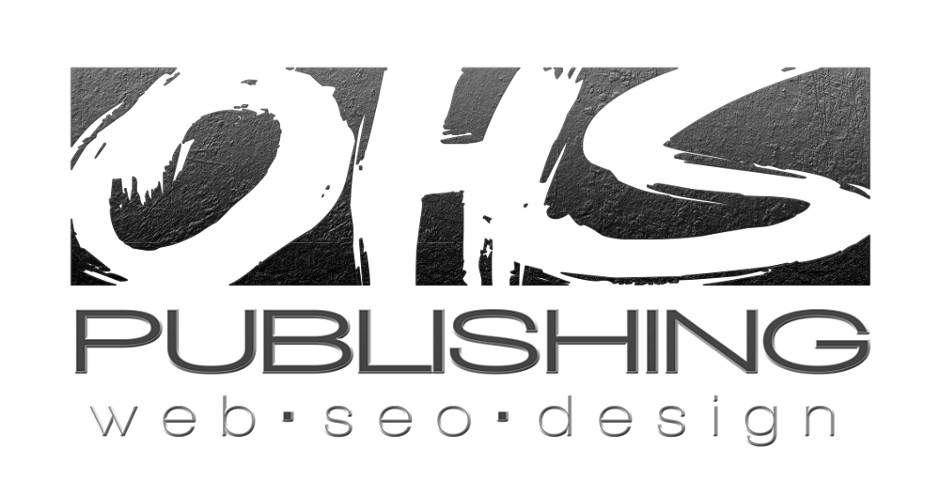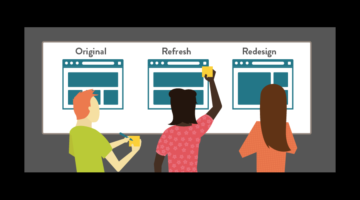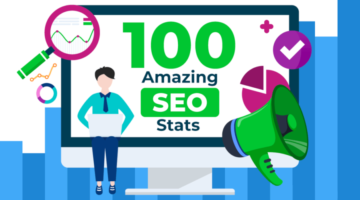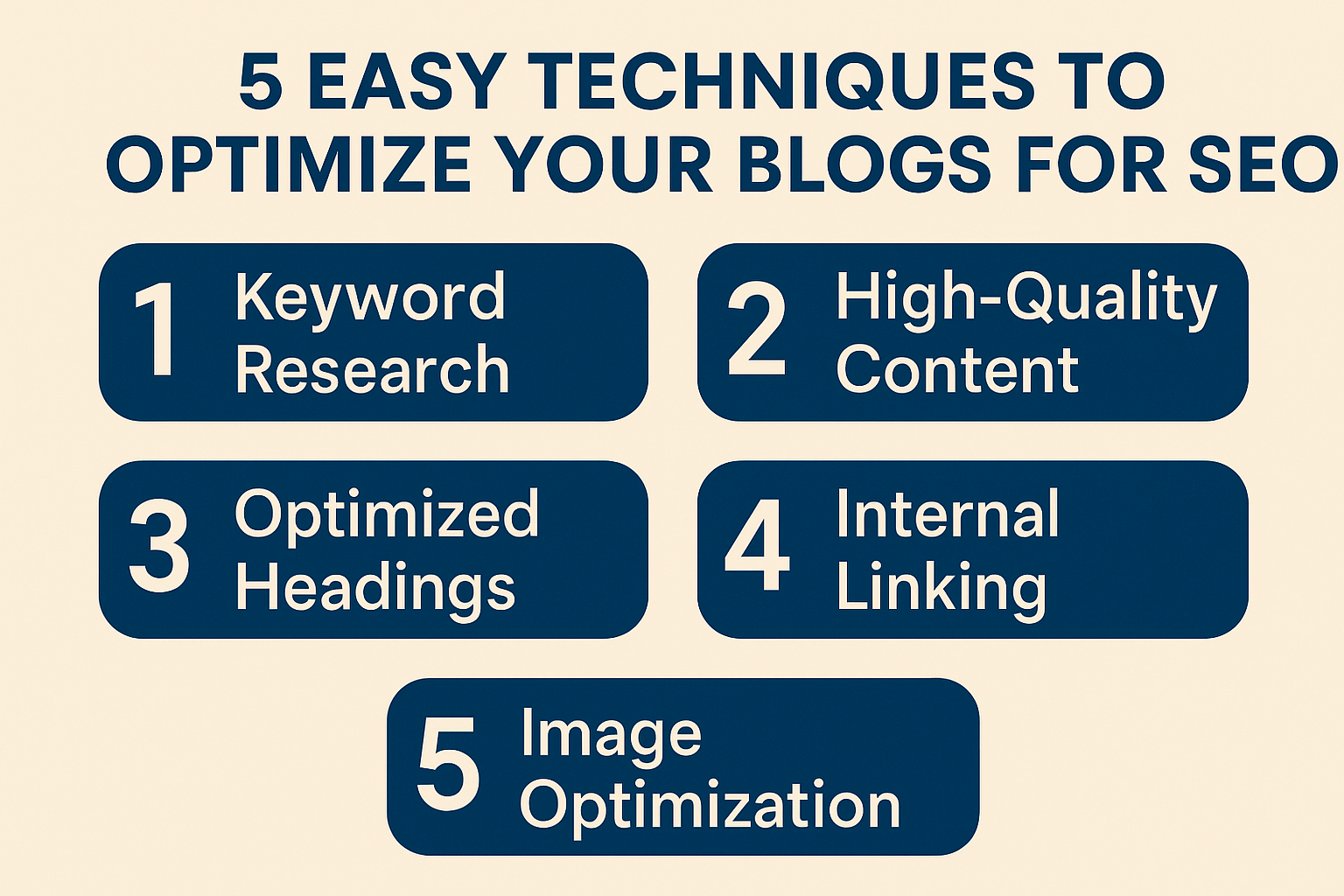Web Design Pitfalls
Top 5 Website Design Mistakes You Must Avoid in 2025 to Keep Your Customers
In the fast-paced digital era of 2025, staying ahead in website design is crucial for businesses aiming to retain their customer base. As technology evolves, users’ expectations for website performance and functionality grow, making it imperative to avoid common pitfalls that can drive potential clients away. From the critical importance of mobile-first design to the need for personalized user experiences, understanding these key elements can make a significant difference in your website’s success. This guide will walk you through the top five website design mistakes and offer practical solutions to fix website conversions, ensuring your business remains competitive and trustworthy in the ever-demanding online market. Whether you’re a business owner or a marketer, these insights will help you improve website performance and meet the demands of 2025 web trends with confidence. The Danger of Falling Behind

In 2025, staying current with web design trends is more critical than ever. This section explores how outdated design can negatively impact your business and highlights common pitfalls to avoid.
Eroding Trust and Conversions
An outdated website design can quickly erode trust and harm conversions. Users in 2025 have high expectations for digital experiences, and failing to meet these standards can lead to lost opportunities.
A poorly designed website can make your business appear unprofessional or out of touch. This perception can cause potential customers to question your credibility and competence.
Research shows that 94% of first impressions are design-related. If your site looks outdated, visitors may assume your products or services are similarly behind the times.
Low-quality design can also impact user experience, making it difficult for visitors to find information or complete desired actions. This frustration often leads to high bounce rates and lost conversions.
Outdated Design Pitfalls
Common outdated design elements can significantly impact your website’s effectiveness in 2025. Recognizing and addressing these issues is crucial for maintaining a competitive edge.
Cluttered layouts and overwhelming amounts of text can quickly turn users away. In the age of information overload, clean, minimalist designs that prioritize key messages are more effective.
Non-responsive designs that don’t adapt to different screen sizes are a major red flag. With mobile devices accounting for over 60% of web traffic, failing to optimize for these users is a costly mistake.
Slow-loading pages, broken links, and outdated content all contribute to a poor user experience. These issues can damage your search engine rankings and drive potential customers to competitors.
Ignoring accessibility standards is another critical mistake. As web accessibility laws become more stringent, ensuring your site is usable by all visitors is both a legal and ethical imperative.
Mistake #1: Slow Load Times

In the fast-paced digital landscape of 2025, slow load times can be detrimental to your website’s success. This section examines why speed is crucial for both SEO and user retention.
Speed’s Role in SEO
Website speed has become a critical factor in search engine optimization (SEO) strategies. Search engines prioritize fast-loading sites to provide the best user experience.
Google’s Core Web Vitals, introduced in 2020, have become even more critical in 2025. These metrics focus on loading performance, interactivity, and visual stability.
Slow sites are penalized in search rankings, making it harder for potential customers to find your business. This can lead to a significant decrease in organic traffic and lost revenue opportunities.
Studies show that a 1-second delay in page load time can result in a 7% reduction in conversions. In the competitive online marketplace of 2025, this could mean the difference between success and failure.
User Retention Factors
User expectations for website performance have skyrocketed in 2025. Slow load times can significantly impact user retention and overall satisfaction.
Research indicates that 53% of mobile users will abandon a site that takes longer than 3 seconds to load. This bounce rate can severely impact your ability to convert visitors into customers.
Slow-loading pages also affect the user’s perception of your brand. A sluggish website can make your company appear unprofessional or technologically behind, eroding trust and credibility.
User frustration with slow sites often leads to negative word-of-mouth, both online and offline. In the interconnected world of 2025, this can quickly snowball into a significant reputation problem.
Mistake #2: Ignoring Mobile-First Design

As mobile device usage continues to dominate in 2025, ignoring mobile-first design principles can result in significant revenue losses. This section explores the importance of prioritizing mobile users in your web design strategy.
Revenue Leaks Uncovered
Failing to implement a mobile-first design approach can lead to substantial revenue leaks for businesses in 2025. These losses often go unnoticed but can have a significant impact on your bottom line.
Mobile users who encounter a poorly optimized site are likely to abandon their purchase or inquiry. This results in immediate lost sales and missed opportunities for customer engagement.
Research indicates that 61% of users are unlikely to return to a mobile site they had trouble accessing. This means that ignoring mobile optimization doesn’t just cost you one-time sales, but also potential long-term customers.
Poor mobile experiences can also negatively impact your brand reputation. In the hyper-connected world of 2025, dissatisfied mobile users are quick to share their frustrations on social media and review platforms.
Mobile-First Design Importance
Mobile-first design has evolved from a trend to a necessity in 2025. This approach prioritizes the mobile user experience from the outset of the design process.
By focusing on mobile users first, you ensure that your site is accessible and functional on the devices most commonly used to access the internet. This approach often leads to cleaner, more focused designs that benefit users on all devices.
Mobile-first design also aligns with search engine preferences. Google’s mobile-first indexing means that the mobile version of your site is considered the primary version for ranking purposes.
Implementing mobile-first design principles can lead to improved user engagement, higher conversion rates, and better overall performance in search engine results pages (SERPs).
Mistake #3: Weak Calls-to-Action

Compelling calls-to-action (CTAs) are crucial for guiding users towards desired actions on your website. This section explores how to transform lackluster CTAs into compelling prompts that drive user engagement and conversions.
Crafting Must-Click CTAs
Creating CTAs that users feel compelled to click requires a strategic approach. The goal is to make your CTAs irresistible and aligned with user intent.
Start by using action-oriented language that communicates the benefit of clicking. Instead of generic phrases like “Click Here,” opt for specific, value-driven text such as “Start Your Free Trial” or “Get Your Personalized Quote.”
Visual design plays a crucial role in CTA effectiveness. Use contrasting colors, appropriate sizing, and strategic placement to make your CTAs stand out without being intrusive.
Consider using urgency or scarcity tactics to encourage immediate action. Phrases like “Limited Time Offer” or “Only 5 Spots Left” can motivate users to act quickly.
Call-to-Action Best Practices
Implementing call-to-action best practices can significantly improve your website’s conversion rates. Here are some key strategies to consider in 2025:
-
Personalize CTAs based on user behavior and preferences.
-
Use A/B testing to continually optimize CTA performance.
-
Ensure CTAs are mobile-friendly and easy to tap on touchscreens.
Research shows that personalized CTAs perform 202% better than generic ones. Tailoring your CTAs to specific user segments or individual behaviors can dramatically increase their effectiveness.
Keep your CTAs concise and focused. Avoid overwhelming users with too many options. Instead, guide them towards the most important actions for your business goals.
Remember to align your CTAs with the user’s journey stage. A first-time visitor might respond better to a “Learn More” CTA, while a returning user might be ready for a “Buy Now” prompt.
Mistake #4: Outdated Visuals & Branding

In the visually-driven digital landscape of 2025, outdated visuals and branding can significantly impact your website’s effectiveness. This section explores the importance of first impressions and how to update your visuals for modern audiences.
First Impressions Matter
The saying “you never get a second chance to make a first impression” holds especially true in web design. Users form opinions about your website within milliseconds of landing on it.
Outdated visuals can immediately signal to users that your business is behind the times. This perception can extend to your products or services, potentially driving customers to more modern-looking competitors.
Studies show that 38% of people will stop engaging with a website if the content or layout is unattractive. This highlights the critical role that visual appeal plays in user engagement and retention.
Consistent, modern branding across your website helps build trust and credibility with your audience. It shows that you’re attentive to details and committed to providing a quality experience.
Updating Visuals for 2025
Keeping your website visuals current requires staying abreast of design trends while maintaining your brand identity. Here are key considerations for updating your visuals in 2025:
-
Embrace minimalism and clean layouts to improve readability and focus.
-
Utilize high-quality, authentic imagery that reflects your brand values.
-
Implement subtle animations and micro-interactions to enhance user engagement.
Consider incorporating emerging technologies like augmented reality (AR) or 3D elements to create immersive experiences. These can help your site stand out and provide unique value to users.
Color psychology continues to play a crucial role in web design. Update your color palette to align with current trends while ensuring it resonates with your target audience and brand message.
Remember to maintain consistency across all brand touchpoints, including your website, social media profiles, and marketing materials. This cohesive approach strengthens brand recognition and trust.
Mistake #5: No Personalization or AI Integration

In 2025, users expect tailored experiences when interacting with websites. This section explores the importance of personalization and AI integration in meeting modern user expectations and enhancing web design.
Modern User Expectations
Today’s users have grown accustomed to personalized experiences across various digital platforms. This expectation has extended to websites, where generic, one-size-fits-all approaches are no longer sufficient.
Users in 2025 value websites that understand their preferences, anticipate their needs, and provide relevant content and recommendations. This level of personalization can significantly enhance user engagement and satisfaction.
Research indicates that 80% of consumers are more likely to make a purchase when brands offer personalized experiences. This statistic underscores the importance of tailoring your website to individual user needs.
AI-powered features like chatbots, predictive search, and intelligent content recommendations have become standard expectations. Users appreciate the convenience and efficiency these technologies provide.
Personalization in Web Design
Implementing personalization in web design involves leveraging user data and AI technologies to create tailored experiences. Here are key strategies for effective personalization:
-
Use AI-driven analytics to understand user behavior and preferences.
-
Implement dynamic content that changes based on user characteristics or past interactions.
-
Offer personalized product recommendations or content suggestions.
Consider using geolocation data to provide location-specific content or offers. This can enhance relevance and improve the user experience for visitors from different regions.
Personalized user interfaces that allow visitors to customize their experience can increase engagement and loyalty. This might include options to save preferences or create customized dashboards.
Remember to balance personalization with privacy concerns. Be transparent about data collection and usage, and provide users with control over their personal information.
Quick Wins You Can Apply Today

While some website improvements require significant time and resources, there are several quick wins you can implement immediately to enhance your site’s performance and user experience.
Immediate Fixes for Conversions
Implementing these immediate fixes can help boost your website’s conversion rates quickly:
-
Optimize your most essential CTAs by making them more visible and compelling.
-
Simplify your forms by removing unnecessary fields and using clear, concise labels.
-
Add social proof elements like customer testimonials or trust badges near conversion points.
Studies show that 88% of consumers trust online reviews as much as personal recommendations. Prominently featuring positive reviews can significantly impact trust and conversions.
Consider implementing exit-intent pop-ups with targeted offers to capture potentially lost conversions. While pop-ups should be used judiciously, they can be effective when well-designed and relevant.
Ensure your site has a clear and easily accessible privacy policy. With increasing concerns about data privacy, transparency can help build trust and encourage conversions.
Improve Website Performance Tips
Enhancing your website’s performance can lead to immediate improvements in user experience and SEO. Here are some quick tips:
-
Compress and optimize images to reduce load times without sacrificing quality.
-
Minify CSS, JavaScript, and HTML to streamline your code and improve loading speed.
-
Enable browser caching to store static files locally on users’ devices.
Consider implementing a content delivery network (CDN) to serve your content from servers geographically closer to your users, reducing latency and improving load times.
Regularly audit and remove any unnecessary plugins or scripts that might be slowing down your site. Each element should serve a clear purpose and provide value to your users.
Use tools like Google PageSpeed Insights or GTmetrix to identify specific areas for improvement in your site’s performance. These tools provide actionable recommendations tailored to your website.
Call-to-Action
As we conclude this guide on avoiding critical website design mistakes in 2025, it’s time to take action. This section offers you an opportunity to assess your website and engage with our services.
Free 2025 Website Audit Offer
Take advantage of our free 2025 website audit to identify areas for improvement and stay ahead of the competition:
-
Comprehensive analysis of your website’s design, functionality, and performance.
-
Personalized recommendations tailored to your business goals and industry standards.
-
Actionable insights to help you prioritize improvements and maximize ROI.
Our expert team uses cutting-edge tools and industry best practices to provide you with a detailed report on your website’s strengths and weaknesses.
This audit will cover all the key areas discussed in this guide, including mobile optimization, load times, CTA effectiveness, visual appeal, and personalization opportunities.
Don’t let outdated design cost you customers. Click here to claim your free website audit and start optimizing your online presence for 2025 and beyond.
Encouraging Reader Engagement
We value your thoughts and experiences. Share your biggest website design challenges or success stories in the comments below.
Have you implemented any of the strategies discussed in this guide? We’d love to hear about your results and any tips you might have for other readers.
For more in-depth discussions on web design trends and best practices, consider joining our monthly webinar series. Sign up here to reserve your spot and gain exclusive insights from industry experts.
Remember, staying ahead in web design is an ongoing process. Please bookmark this page and revisit it regularly to ensure your website remains competitive in the ever-evolving digital landscape of 2025.












